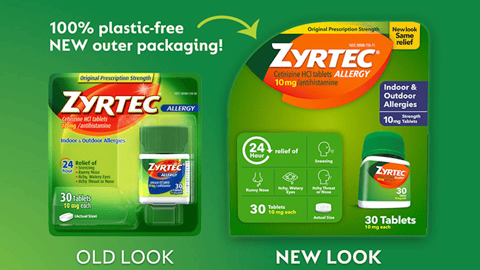P&G Steps Up Climate Change Actions to Cut Most Emissions Across Supply Chain
Procter & Gamble announced new actions related to climate change, including the goal to achieve net zero greenhouse gas (GHG) emissions across its operations and supply chain by 2040.
It also shared details on interim 2030 goals, which include reducing emissions across operations by 50% and reducing emissions across its supply chain by 40%.
The plan to net zero prioritizes the cutting of most of emissions across its operations and supply chain, from raw material to retailer. For residual emissions in these categories that cannot be eliminated, the company said it will use natural or technical solutions that remove and store carbon.
“We are fully committed to use P&G’s innovation and ingenuity to unlock new solutions to address climate change,” said David Taylor, P&G chairman, president and CEO. “The task ahead of us is urgent, difficult and much bigger than any single company or country. P&G is tackling these challenges head-on by reducing our footprint and leveraging our scale to foster unprecedented collaboration across our value chain.”
The No. 2 consumer goods company has also joined the UN’s Race to Zero and the Business Ambition for 1.5°C campaigns. In sharing progress and goals, P&G noted the following initiatives:
- It’s advancing natural climate solutions to balance any remaining emissions from operations that cannot be eliminated by 2030, including new projects that help protect and restore forests and other ecosystems essential to the people and wildlife.
- It’s nearing its 2030 goal of purchasing 100% renewable electricity, having reached 97%.
[See also: McCormick Advances Sustainability Standards for Suppliers]
- The Pampers brand is working with suppliers to reduce their carbon footprint and avoided an estimated 1 million metric tons of GHG from the production of its materials over the past five years.
- P&G established a Product Supply Innovation Center (PSIC) in Kronberg, Germany, as a hub for a network of local suppliers, tech companies, and top universities, developing solutions that are global and scalable to help decarbonize the supply chain.
- The company is leveraging geothermal, solar, and renewable steam at some manufacturing sites, and has partnered with the World Wildlife Fund, manufacturers, and local governments to create the Renewable Thermal Collaborative to identify and scale renewable, cost-competitive thermal energy solutions.
- It’s partnering to advance innovation in materials derived from renewable, bio-based, or recycled carbon across such brands as Head & Shoulders, Pantene, Ariel, Tide and Pampers.
- The Tide brand is working with Silicon Valley start-up Twelve to explore carbon capture technology incorporating CO2 from emissions into ingredients.
- P&G and its brands are educating consumers about taking small actions at home, including reducing carbon through cold water washing, which is the largest portion of the company’s carbon footprint. It’s also partnering to help advance solutions that create more energy-efficient homes.
“While no one has all of the answers on how to bring a net zero future into focus, we will not let uncertainty hold us back,” said Virginie Helias, P&G chief sustainability officer, in a statement. “To achieve these goals, we will leverage existing solutions and seek transformative new ones that are not available in the marketplace today. This will require partnership across the private, nonprofit, and public sectors and involve every aspect of our business, from the very beginning of our products’ lifecycle to the very end.”





